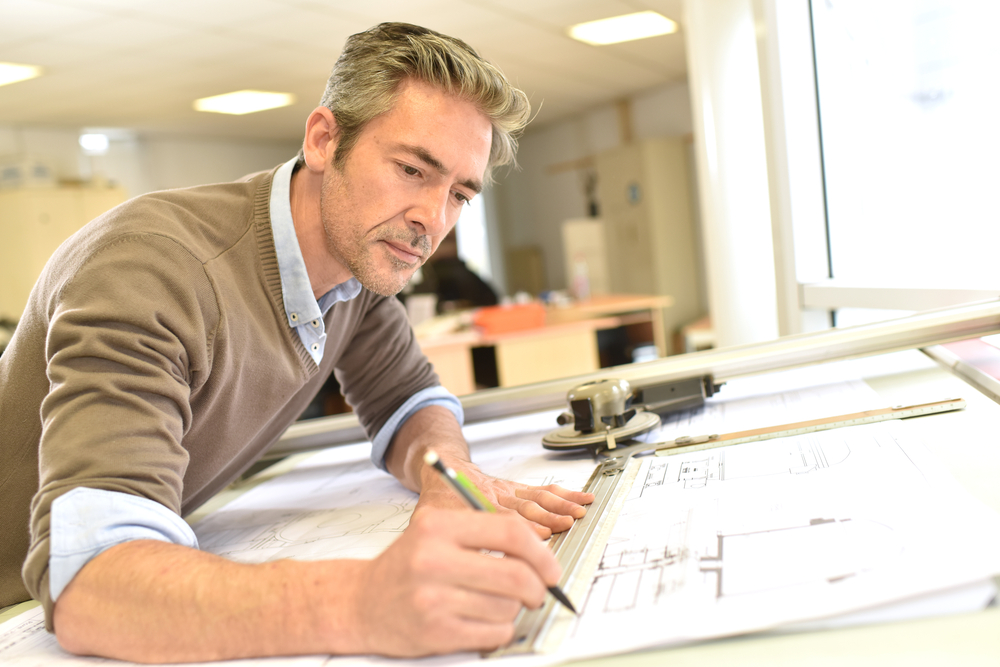Architect Portfolio Tips for Making an Impact in the Industry
Recognizing the Diverse Job Paths Available for Aspiring Architect
As a hopeful Architect, you have a world of job paths waiting for you. Each course offers special challenges and possibilities to apply your creativity and technical expertise. Whether you're drawn to typical architecture or the subtleties of sustainable style, there's a niche that straightens with your interests. Recognizing these diverse alternatives can form your expert journey, yet which direction will you pick to explore first?
Traditional Design: Designing Structures and buildings
Traditional style focuses on creating buildings and structures that blend capability with aesthetic charm. As you discover this field, you'll value the complex equilibrium between kind and objective. You'll learn to attract inspiration from historical styles, including elements like symmetry, products, and craftsmanship. Your designs can reflect social heritage, showcasing local traditions while meeting modern needs.
You'll establish skills in drafting, model-making, and website evaluation, permitting you to picture and interact your ideas successfully. Engaging with clients, you'll need to recognize their vision and translate it into practical styles.
Additionally, building codes and sustainability techniques are essential in your job, guaranteeing your structures are ecologically friendly and secure. As you grow in your career, you'll locate chances in domestic, commercial, or also repair projects, each offering special difficulties. Embracing typical design paves the means for a satisfying profession that admires the past while shaping the future.
Urban Planning: Forming Communities and Public Spaces
As an ambitious Architect, you can play an important duty as an urban planner, transforming how neighborhoods connect and work. By using neighborhood involvement methods, you'll guarantee that citizens have a voice in forming their atmosphere. And also, integrating sustainable design concepts will certainly help develop spaces that not only fulfill today's needs however additionally safeguard the future.
Duty of Urban Planners
While numerous may consider designers as the single dreamers behind buildings, metropolitan organizers play a vital duty in shaping the wider landscape of areas and public spaces. They evaluate land usage, zoning regulations, and community needs to produce lasting settings that enhance high quality of life. By teaming up with numerous stakeholders, you'll help create parks, transport systems, and suburbs that promote social interaction and access. Urban planners also concentrate on environmental factors to consider, making certain that growths integrate green spaces and support biodiversity. Your competence in spatial style and neighborhood characteristics permits you to imagine future development while maintaining social heritage. In this crucial role, you'll directly influence how people experience their surroundings, making every project an opportunity for favorable adjustment.
Neighborhood Engagement Approaches
Reliable neighborhood engagement approaches are crucial for metropolitan planners to assure that the voices of locals are heard and valued in the preparation process. To cultivate significant discussion, you must prioritize open discussion forums and workshops where neighborhood members can reveal their ideas and worries. Use studies and social networks to reach a more comprehensive audience, making certain diverse viewpoints are included. Collaborating with regional organizations can improve trust and assist in deeper links. It is necessary to supply clear info concerning decision-making processes and suggested projects, enabling homeowners to feel educated and empowered. By actively paying attention and incorporating responses, you'll develop spaces that show the area's needs, eventually resulting in even more sustainable and effective city environments. Accept openness and continual discussion for enduring impact.
Sustainable Design Principles
When making urban rooms, including lasting design principles is important for producing environments that flourish both ecologically and socially. Consider incorporating eco-friendly rooms, like gardens and parks, to enhance biodiversity and enhance air quality.
Creating with water conservation in mind is also crucial-- think concerning rain yards and permeable surface areas to handle stormwater. Involving neighborhood members throughout the planning procedure guarantees that the areas you create satisfy their needs and motivate social communication. By accepting these concepts, you'll contribute to vivid, sustainable city landscapes that benefit everybody.

Landscape Architecture: Creating Lasting Outside Environments
As you discover landscape design, you'll find essential layout concepts that create beautiful and useful exterior areas. Sustainable techniques play a vital function in ensuring these settings flourish while minimizing ecological impact. And also, you'll find a selection of profession opportunities that enable you to make a real distinction in how individuals interact with nature.
Layout Principles in Landscape
Recognizing style principles in landscape design is vital for producing lasting outdoor settings that harmonize with nature. You'll require to contemplate aspects like equilibrium, scale, and proportion to ensure your layouts feel natural and welcoming. Incorporating indigenous plants not just enhances biodiversity however additionally reduces water usage, making your landscape resistant. Think regarding the circulation of space and exactly how people connect with it; pathways and seating areas must welcome expedition and relaxation. Additionally, take note of seasonal adjustments, designing with materials that match the environments year-round (Architect). By focusing on sustainability and looks, you can develop outdoor spaces that enrich the neighborhood and promote wellness. Accepting these concepts will certainly establish a solid structure for your career in landscape architecture.
Sustainable Practices Summary
Sustainable techniques in landscape style not just concentrate on aesthetics yet additionally prioritize ecological health and source preservation. By integrating native plants, you boost biodiversity and minimize the requirement for chemical fertilizers and chemicals. Carrying out effective irrigation systems aids save water and minimizes drainage, securing nearby ecosystems. You can make areas that promote dirt health, such as making use of natural materials and exercising permaculture principles. Additionally, including environment-friendly facilities, like rain yards and porous sidewalks, help in stormwater administration and reduces metropolitan heat. When you develop outside settings with sustainability in mind, you add to a much healthier world and offer areas that foster neighborhood link. Inevitably, these practices ensure your designs benefit both individuals and the environment for many years ahead.
Career Opportunities Exploration
With a strong foundation in lasting techniques, landscape style offers a variety of profession paths that enable you to make a purposeful influence on the setting. You could work as a landscape designer, creating aesthetically pleasing and functional outdoor spaces, or specialize in ecological remediation, assisting to restore damaged environments. Urban coordinators usually team up with landscape designers to produce eco-friendly areas in urban settings, enhancing city livability. If you're enthusiastic concerning education and learning, think about ending up being a landscape design educator, inspiring future generations. In addition, you could function with nonprofits concentrated on environmental sustainability or take part in study to introduce new practices. Each course not just shapes stunning environments but additionally promotes a healthier earth for future generations.
Lasting Layout: Concentrating on Eco-Friendly Practices
As you discover your career in style, embracing eco-friendly techniques can set you apart in an affordable area. Sustainable layout focuses on developing buildings that lessen environmental effect while boosting resident health. By incorporating sustainable materials, energy-efficient systems, and lasting building methods, you'll contribute to a greener future.
Begin by obtaining knowledge of eco-friendly qualifications like LEED or BREEAM, which can reinforce your credentials. Take into consideration how natural light, air flow, and thermal performance can enhance layout. Collaborate with engineers and environmental professionals to introduce services that minimize waste and preserve sources.
Do not forget the value of area participation-- engaging local stakeholders can influence styles that balance with the setting. As customers significantly prioritize sustainability, your experience in environmentally friendly methods will read more not only draw in tasks yet additionally fulfill your passion for accountable architecture. Welcome this critical facet of the career, and watch your career thrive.
Historic Conservation: Safeguarding and Bring Back Cultural Heritage
While you begin on your building trip, consider the important function of historic preservation in maintaining our social heritage. This area concentrates on the security and remediation of considerable buildings, websites, and frameworks that tell the tales of our past. By involving in historical preservation, you'll help protect the architectural heritage that forms neighborhood identity.
As a historical preservation Architect, you'll analyze historical importance and analyze the problem of structures. You'll work carefully with historians and guardians to ensure authentic repair methods are used. This occupation course allows you to blend creativity with study, enabling you to make options that respect initial materials and workmanship.
Your job not only adds to sustainability by reusing existing structures but likewise cultivates a sense of satisfaction within communities. Accepting this course will aid you become a guardian of background, protecting the stories and aesthetic appeals that enrich our lives.
Interior Style: Enhancing Indoor Spaces
Historic preservation and interior style both share a commitment to improving the constructed environment, but they concentrate on various facets. While historic preservation emphasizes maintaining a framework's historical and cultural value, interior architecture nos in on read more maximizing indoor spaces for performance and looks.
As an ambitious Architect, you'll find that interior design permits you to blend imagination with technological abilities. You'll make spaces that not only look good however likewise advertise convenience and performance. This area entails recognizing how light, color, and materials interact within a space, affecting mood and usability.
You'll work on different jobs, from property homes to industrial offices, making sure that each setting satisfies the requirements of its passengers. By prioritizing individual experience, you can transform interiors right into motivating and useful areas, making a substantial effect on just how people communicate with their surroundings. Embrace the possibility to boost interior atmospheres and shape the way individuals work and live.
Industrial Design: Merging Capability With Visual Appeals
Industrial layout plays an essential duty in developing items that effortlessly blend visual appeals with functionality, ensuring that what you use day-to-day is not just visually appealing but likewise functional. As an aspiring Architect, you can engage yourself in this field, concentrating on creating everything from furniture to customer electronics. Your job entails understanding user needs, products, and manufacturing procedures, permitting you to produce innovative remedies that improve day-to-day experiences.
In industrial layout, you'll frequently collaborate with producers, online marketers, and designers, ensuring that your styles are not only lovely however additionally possible. You'll discover to stabilize form and function, focusing on use without sacrificing design. By refining your abilities in sketching, 3D modeling, and prototyping, you'll be fully equipped to bring your concepts to life. This job path provides a vibrant environment where creativity satisfies functionality, making it a fulfilling choice for architects thinking about shaping the products of tomorrow.
Often Asked Questions
What Educational Qualifications Do I Required to Become an Engineer?
To end up being a designer, you'll need a specialist degree in architecture, generally a Bachelor's or Master's. Additionally, you'll need to complete a teaching fellowship and pass the Architect Registration Exam to practice legally.
Exist Accreditation Requirements for Various Architectural Occupation Paths?
Yes, there're accreditation demands for different architectural paths. Architect. You'll need to pass tests, complete internships, and sometimes pursue specialized training, depending upon your chosen emphasis, like landscape architecture, city style, or historic conservation
What Software Abilities Are Vital for Engineers Today?

How Can I Gain Practical Experience While Researching Architecture?
You can acquire useful experience by interning at architectural companies, getting involved in style competitions, volunteering for community jobs, or collaborating with schoolmates on real-world projects. These possibilities improve your abilities and build important links in the market.
What Work Opportunities Exist Outside Typical Design Firms?
You can discover numerous work chances outside typical design companies, like urban planning, indoor design, landscape style, construction monitoring, property development, or perhaps duties in sustainability consulting. Each offers special obstacles and rewards.
Whether you're drawn to typical architecture or the nuances of lasting layout, there's a specific niche that straightens with your passions.When developing metropolitan rooms, incorporating sustainable style concepts is crucial for creating atmospheres that prosper both environmentally and socially.As you explore landscape architecture, you'll find essential design principles that produce functional and gorgeous outside areas.Recognizing layout concepts in landscape style is essential for creating sustainable outdoor environments that balance with nature.In industrial style, you'll typically work together with marketing professionals, producers, and engineers, guaranteeing that your styles are not only stunning yet likewise possible.